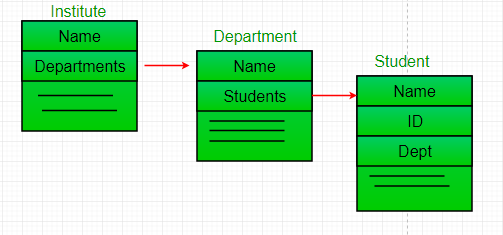It is a special form of association where
- It represents Has-A relationship.
- It is a unidirectional association; i.e., a one-way relationship. For example, department can have students but vice versa is not possible and thus unidirectional in nature.
- In aggregation, both the entries can survive individually which means ending one entity will not affect the other entity.
Institute which has a number of departments like CS and EE.
Every department has a number of students.
So, we make an Institute class which has a reference to object or a number of objects (i.e., list of objects) of the Department class.
That means Institute class is associated with Department class through its object(s).
And Department class has also a reference to object or objects (i.e., list of objects) of Student class.
It means it is associated with Student class through its object(s).
It represents a Has-A relationship.
|

|
| Variety is the spice of life. |